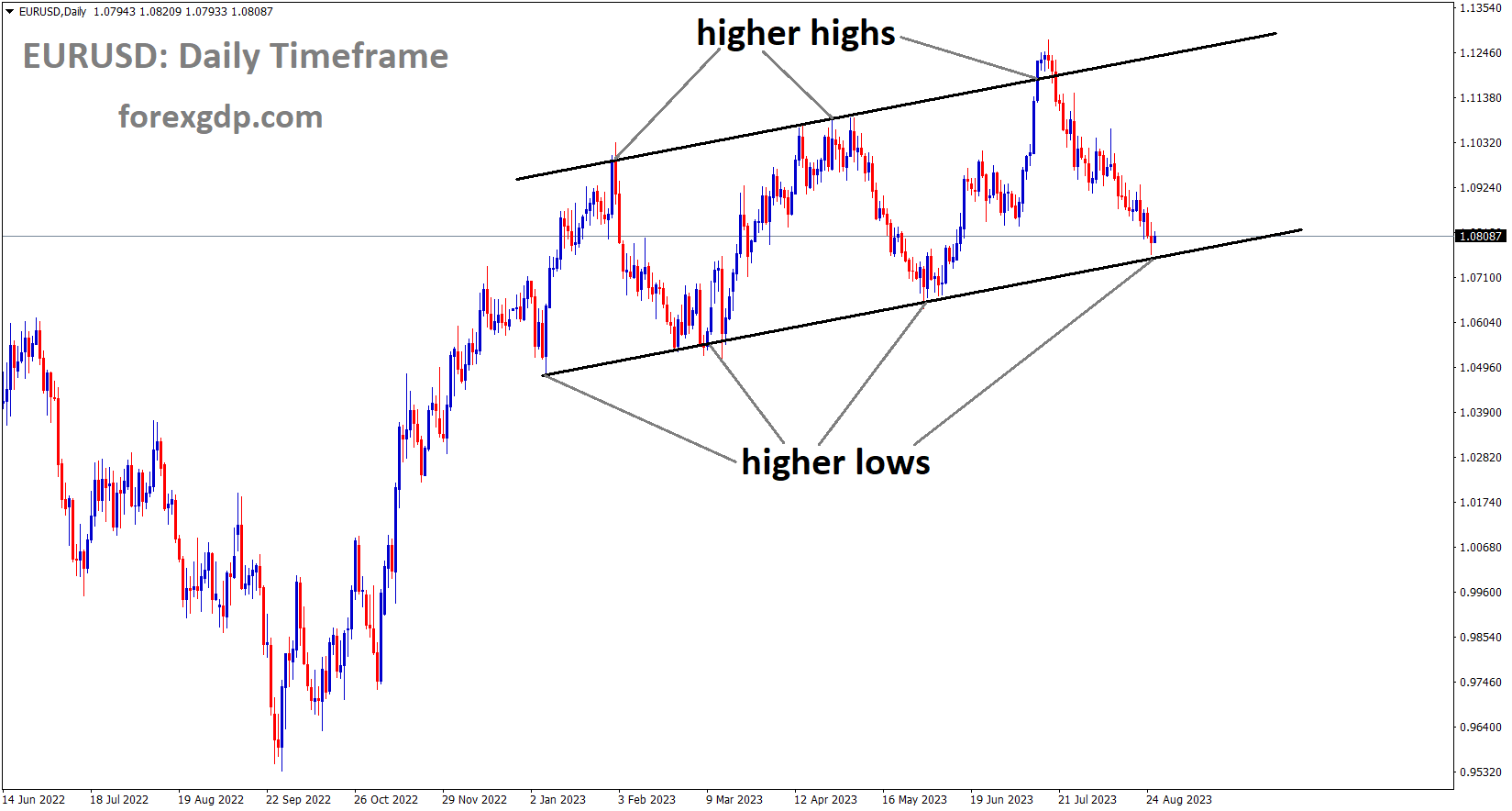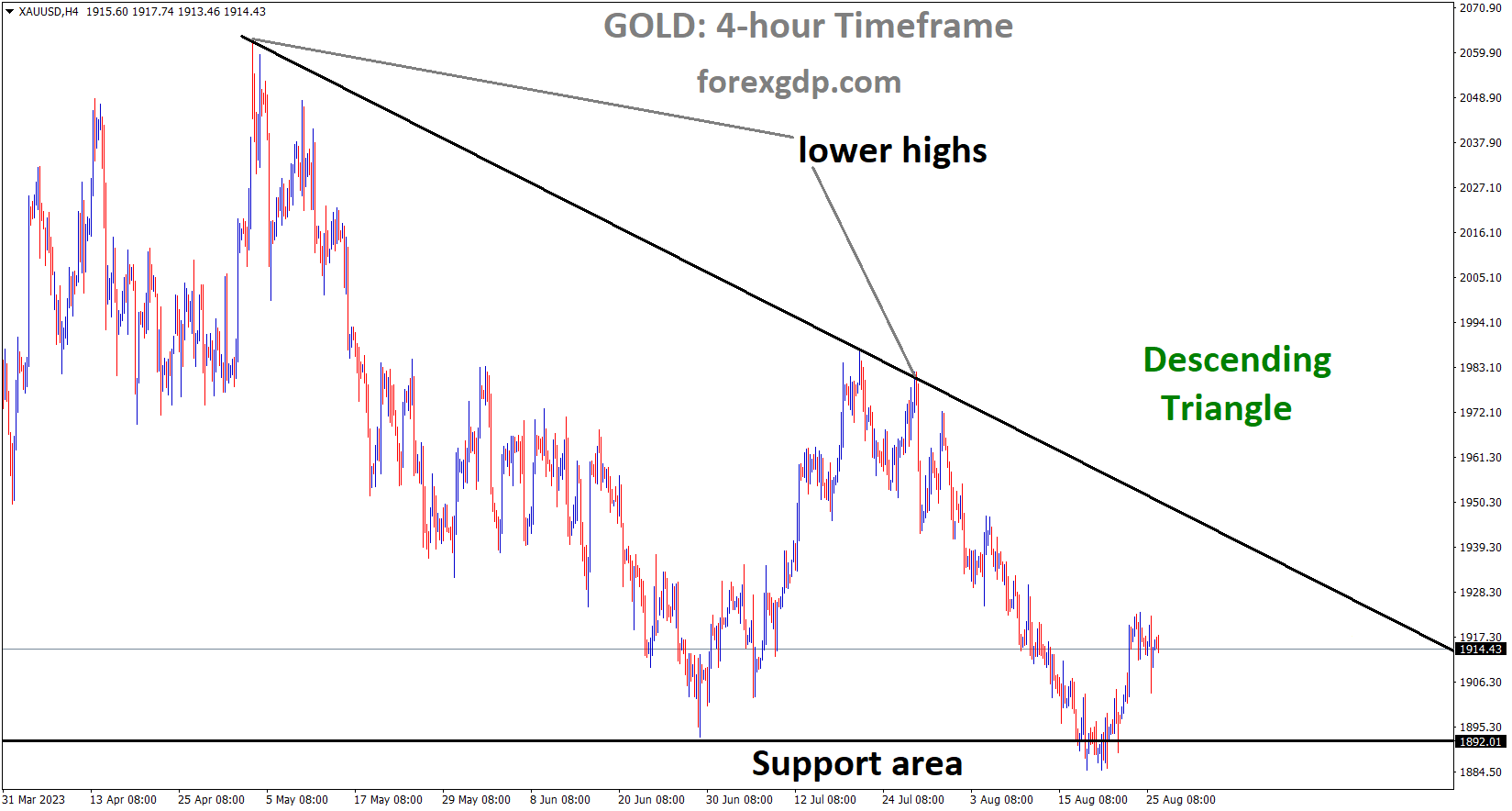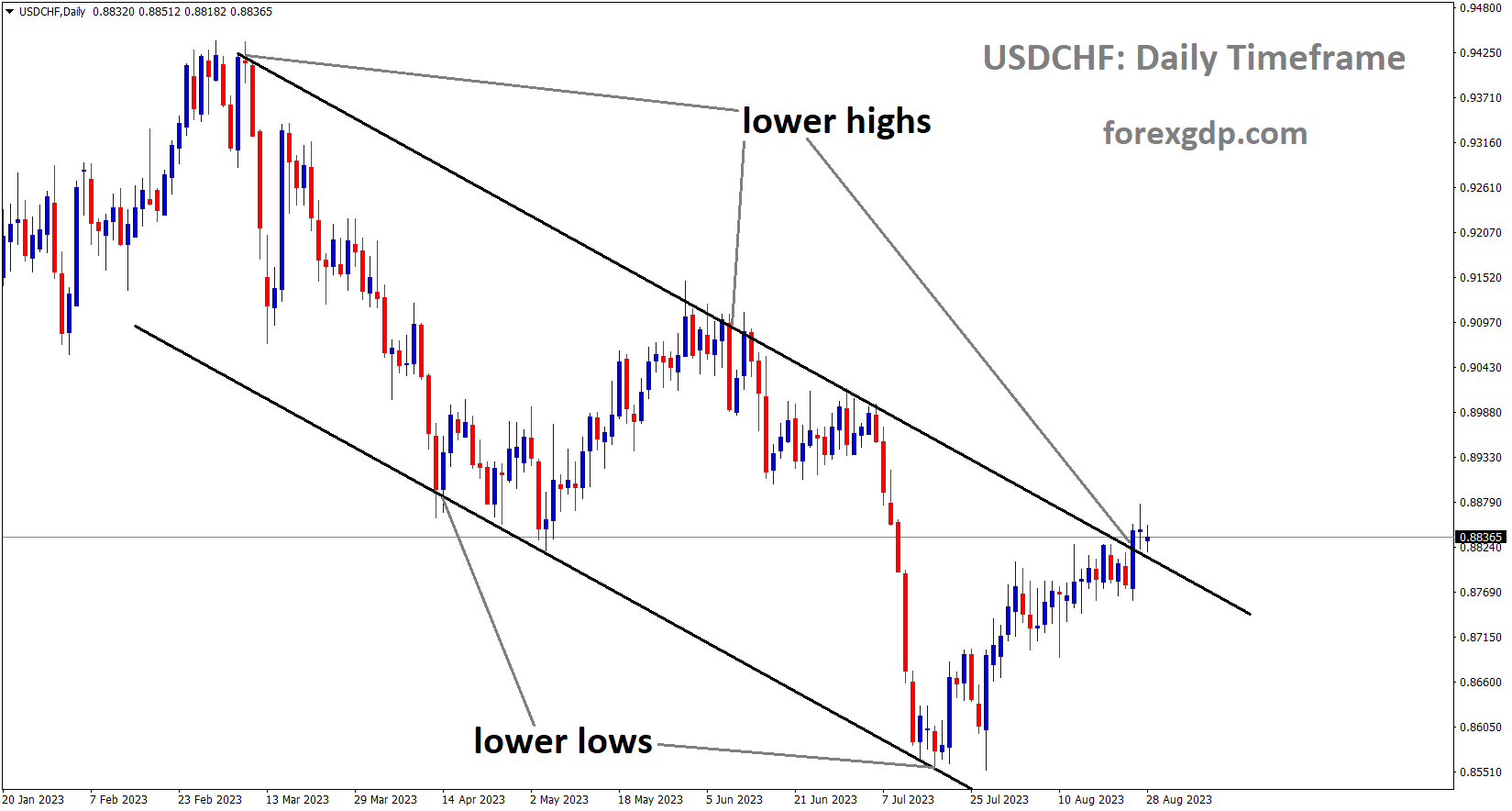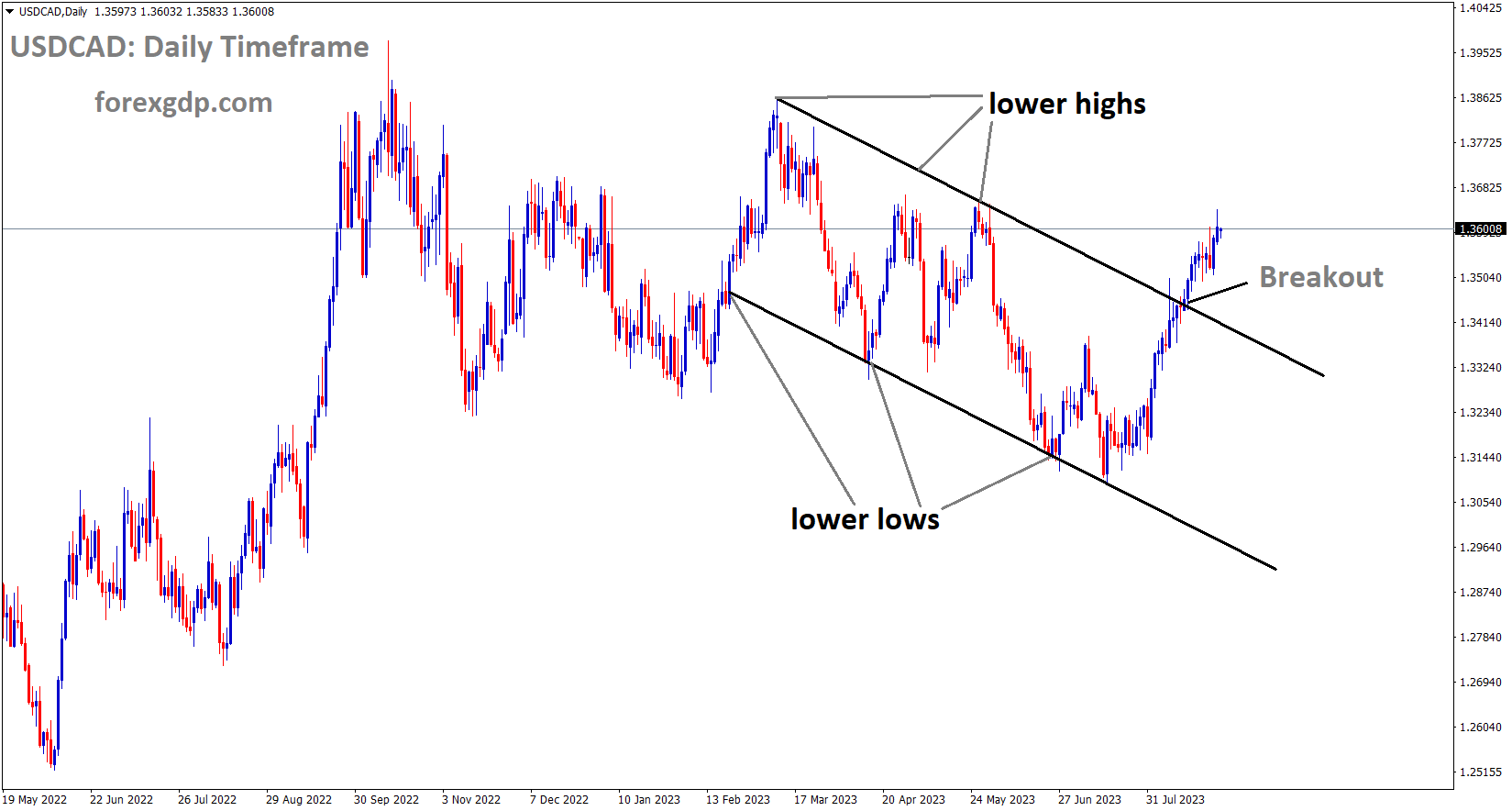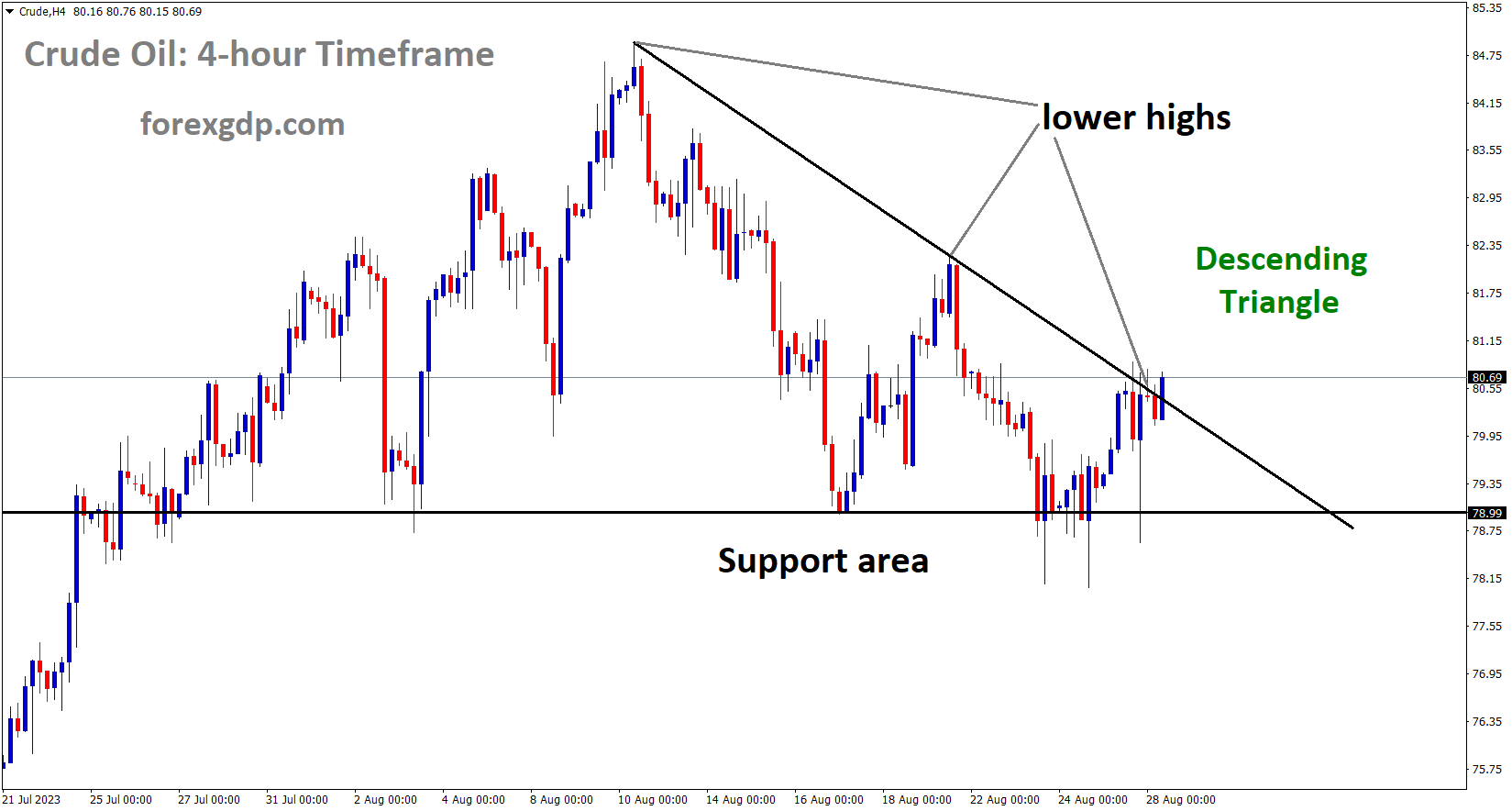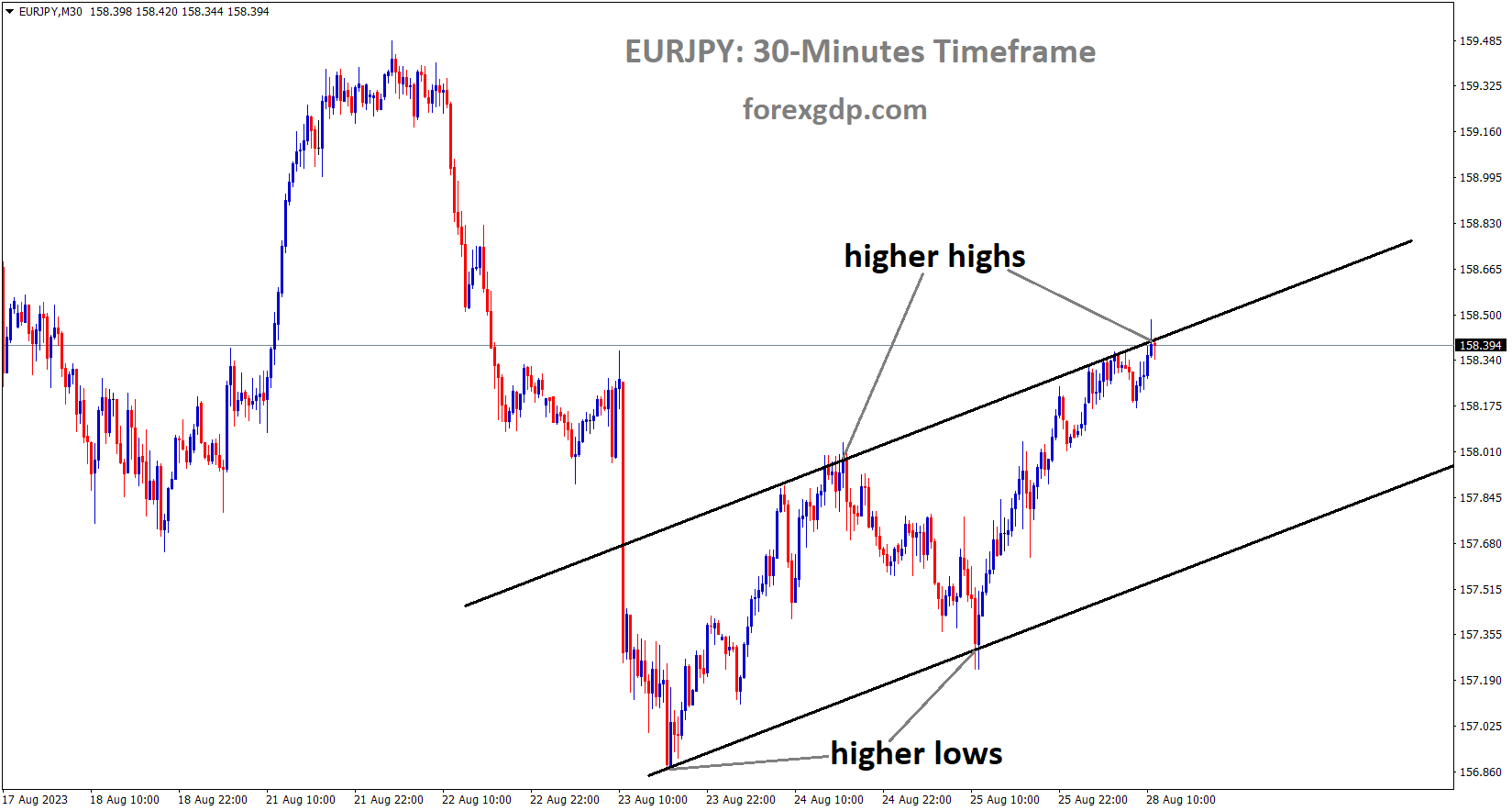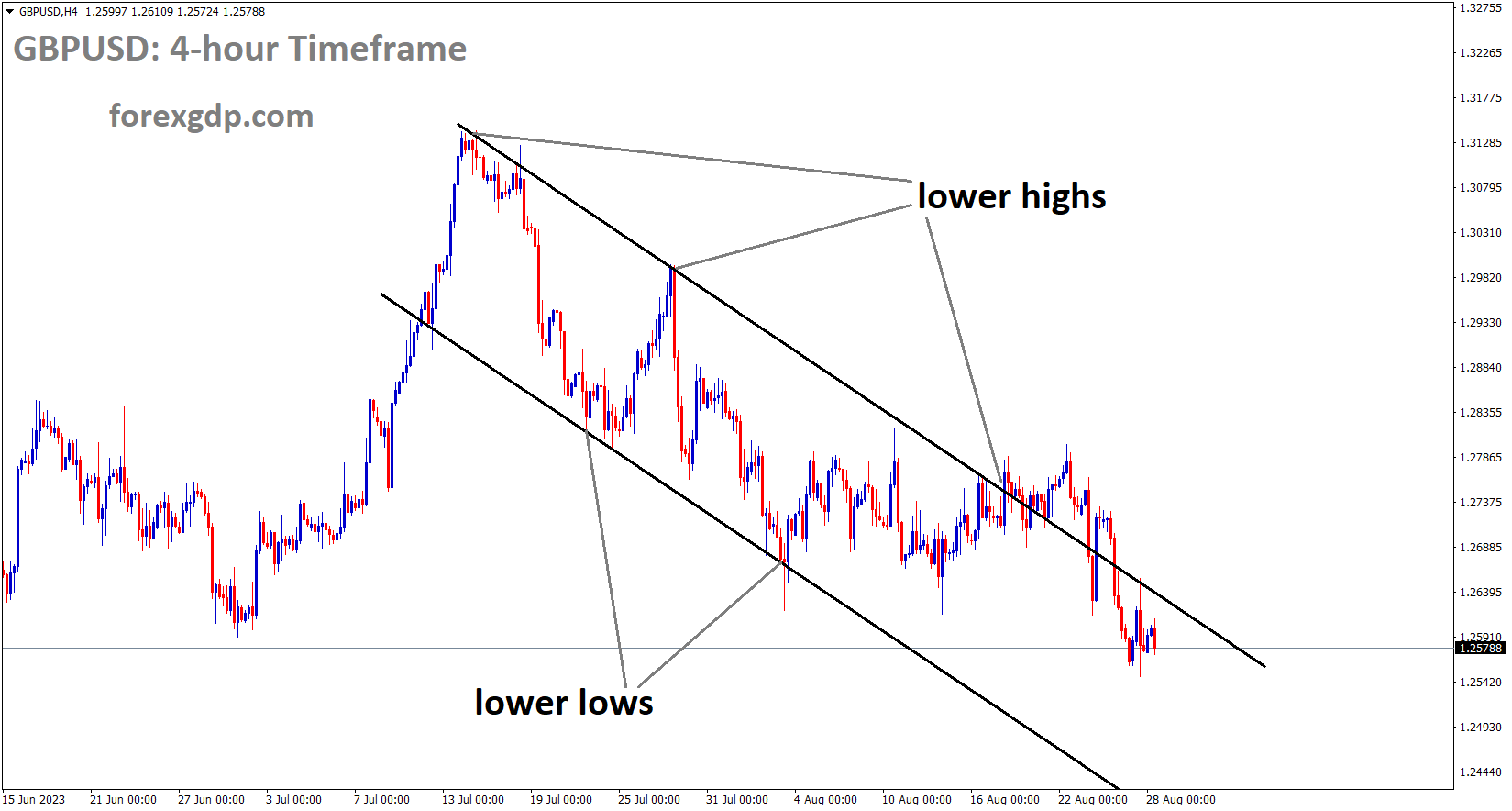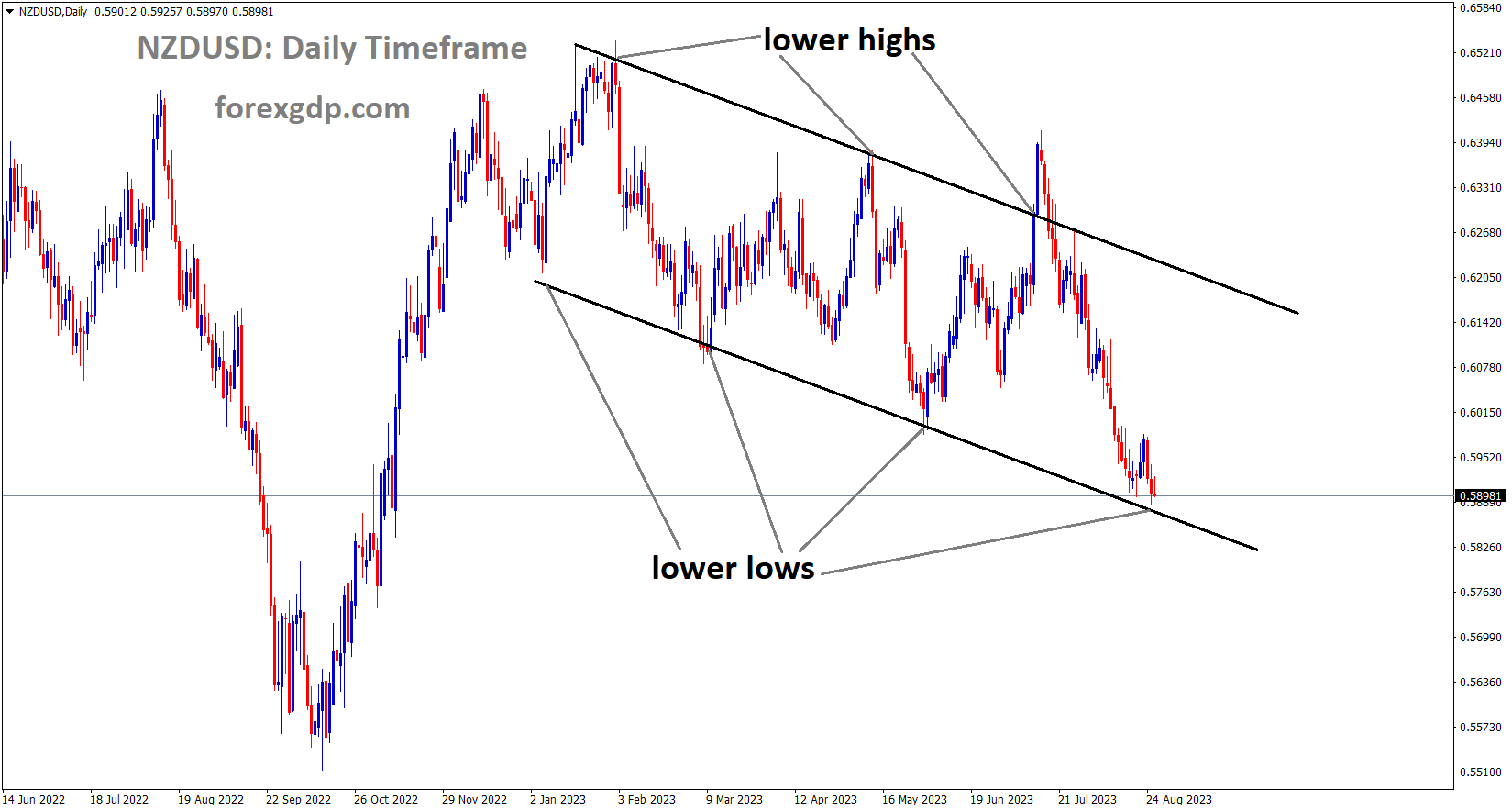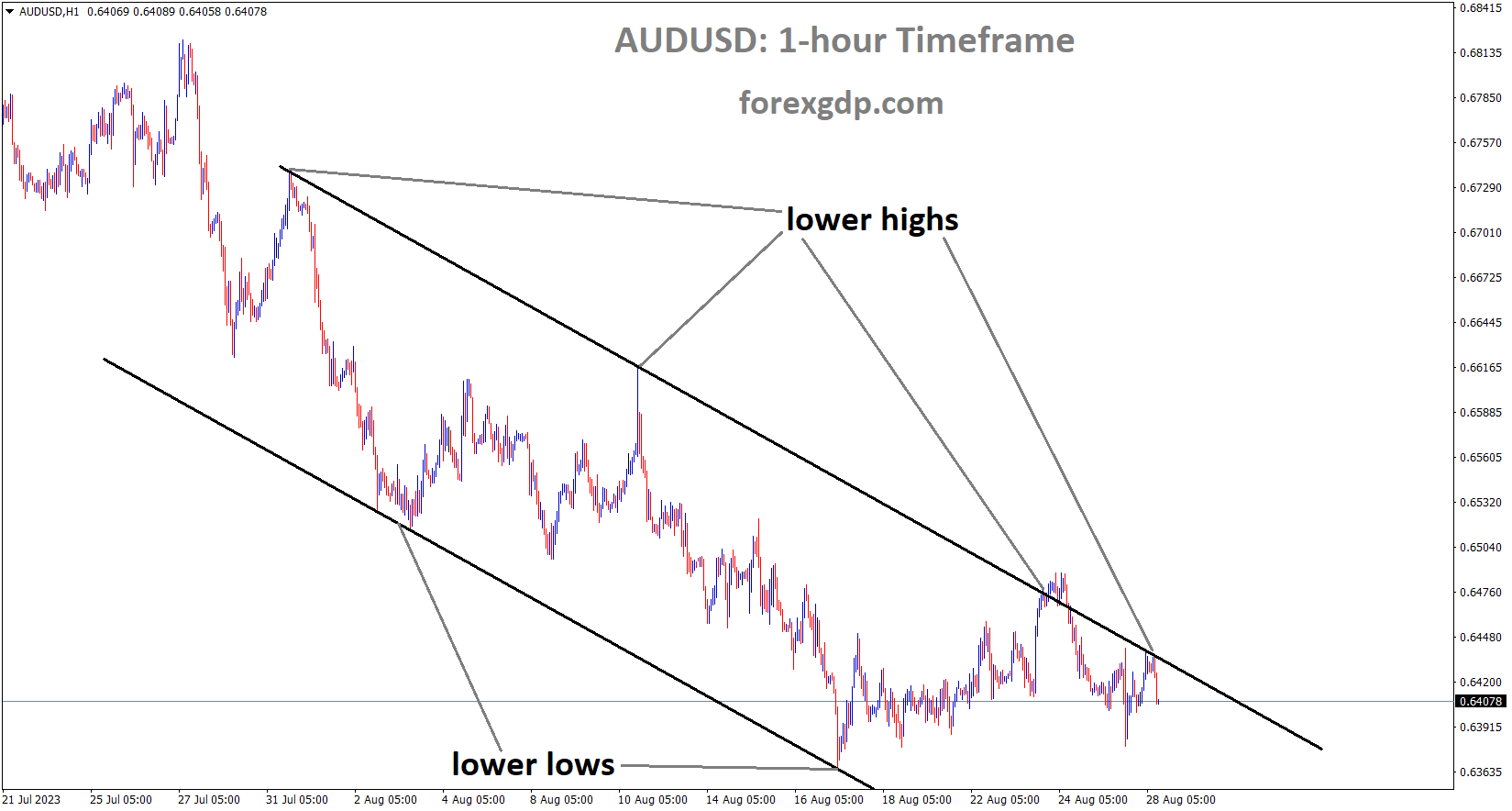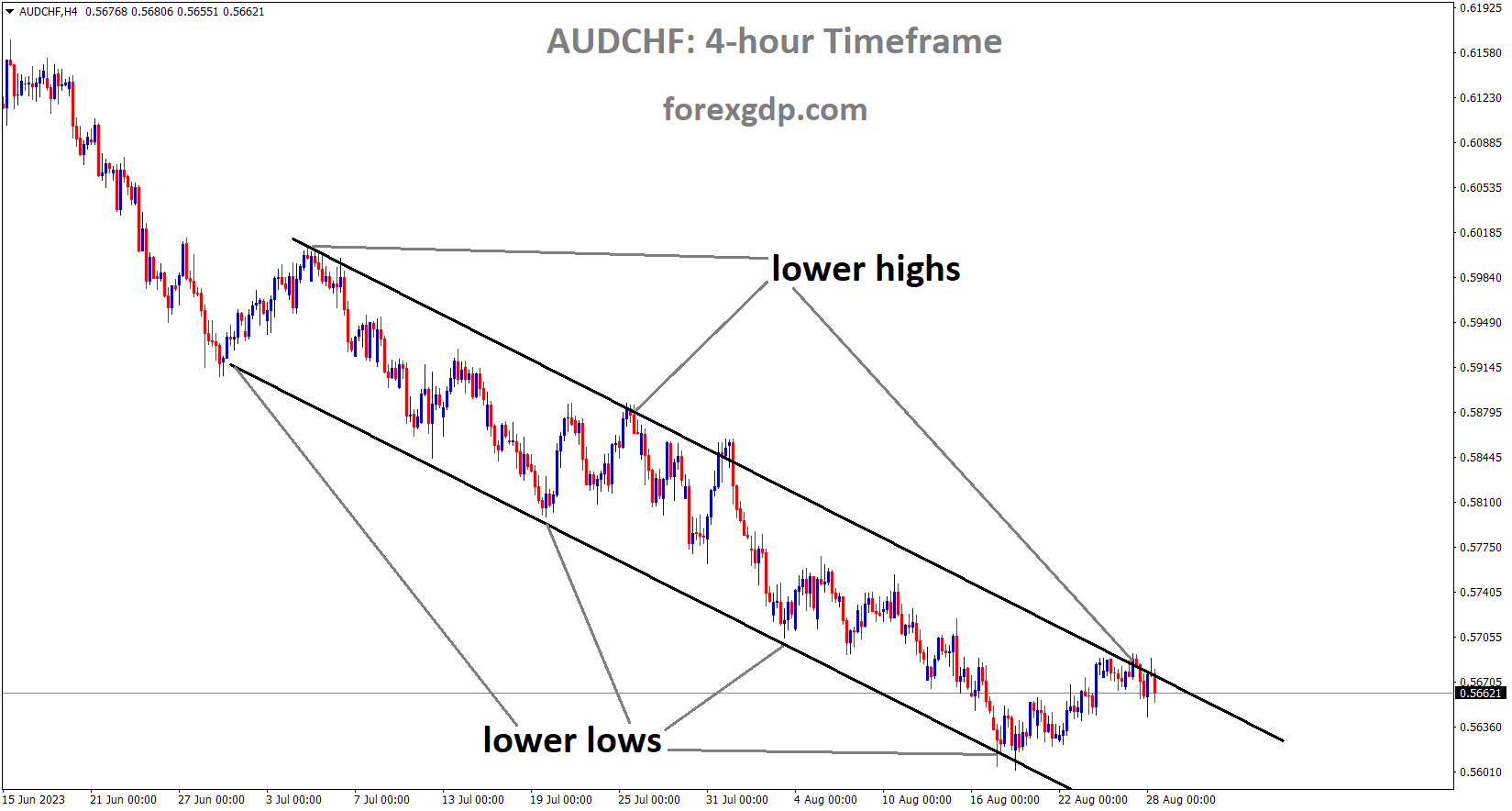EURUSD Analysis
EURUSD is moving in an Ascending channel and the market has reached the higher low area of the channel
According to French Finance Minister Bruno Le Marie, food producers should be asked to limit price increases in order to control the inflation rate. Prices in the services sector have also increased. This year, no rate reduction is anticipated.
During his appearance on Monday, French Finance Minister Bruno Le Maire shares her thoughts on inflation and monetary policy. Interest rates will not be lowered in the upcoming months. Will urge food producers to do more to combat inflation—what they are currently doing is not enough. We must also address the pressure on inflation in the services sector.
XAUUSD Analysis
XAUUSD is moving in the Descending triangle pattern and the market has rebounded from the horizontal support area of the pattern
Due to FED Powell’s speech, which expressed 50% confidence in rate hikes in future meetings, gold prices are mixed compared to the USD. The US-China relationship is more fearful because of proposed tax changes and a decline in US exports to China.
After reversing the bearish trend with its first positive weekly close in five sessions, the gold price XAUUSD is still volatile. The market’s trepidation ahead of this week’s crucial US inflation and employment hints may be the cause of the Yellow Metal’s most recent inaction. In doing so, the XAUUSD fails to support the recent decline in US Treasury bond yields, the US currency, and Asia’s optimism about China. In addition to the pre-data caution, the US Federal Reserve Fed officials’ conflicting remarks at the annual Jackson Hole Symposium also weigh heavily on the gold price. Nevertheless, at last week’s major gathering, a majority of Fed officials defended tight monetary policies while failing to propose additional rate hikes and emphasising the need for data to guide future decisions. This suggests that Fed hawks are losing ground.
China has announced additional measures to support economic activity elsewhere, but the bulls of XAUUSD are encouraged by conflicting worries about US-China trade relations and the possibility of a slower recovery in one of the world’s largest gold consumers. Going forward, the Sino-American talks in Beijing and this week’s China activity data will be critical to follow for the gold traders in order to determine their course. The Federal Reserve’s Fed preferred inflation indicator, the Core Personal Consumption Expenditure PCE Price Index for July and the August monthly employment report, will also be significant.
USDCHF Analysis
USDCHF is moving in the Descending channel and the market has reached the lower high area of the channel
After the Swiss employment level for the second quarter came in at 5.432 million, instead of the expected 5.428 million and the previous reading of 5.389 million, the Swiss franc strengthened.
At the beginning of the week, USDCHF trades lower, centred around the 0.8830 level. In fact, the USDCHF pair lost ground following its weekly peak of 0.8876 on Friday due to the decline in US Treasury yields. The positive Swiss Employment Level Q2 data, which increased to 5.432M from the previous reading of 5.389M and marginally above expectations of 5.428M, further puts pressure on the pair. Despite the US Federal Reserve’s Fed hawkish comments at the Jackson Hole Symposium, the US Dollar Index DXY, which tracks the performance of the US dollar against the six major currencies, is trading lower at 104.10. This reinforces the cautious sentiment of the market as traders search for more clues about the Fed’s monetary policy stance. Chairman of the Federal Reserve Jerome Powell promoted higher for longer interest rates. He acknowledged that this policy approach has a constraining effect, but emphasised that the Fed is unable to definitively determine the exact neutral rate. Powell also emphasised that a significant amount of work remains before price stability is achieved. Considering the current state of economic uncertainty, he emphasised the need for adaptable and quick decision-making when determining monetary policy.
Furthermore, Philadelphia Fed President Patrick Harker stated that he does not believe that additional rate increases are necessary right now. He suggested that the Federal Reserve keep interest rates at their current levels while closely examining the effects of its policies on the overall state of the economy. Meanwhile, labour market and GDP data point to an expanding economic momentum, according to Cleveland Fed President Loretta Mester. She emphasised that in order to meet the inflation target, the current rates are insufficiently restrictive. The moderate US economic data that was released the week prior caused the Greenback to weaken. The US Michigan Consumer Sentiment Index for August fell short of expectations, coming in at 69.5 instead of 71.2. US Durable Goods Orders for July showed a 5.2% decline versus the 4% market consensus, reversing from the June reading of 4.4%. On the other hand, Initial Jobless Claims revealed good job conditions and growing concerns about the US inflation outlook.
The US Commerce Secretary Gina Raimondo’s four-day visit to Beijing is currently the focus of attention for USDCHF traders. Developing commercial relations between the US and China is the main goal of this visit. It is critical to emphasise how tense things are right now between these two powerful nations. Later in the week, investors should also be closely monitoring China’s manufacturing and services PMIs Purchasing Managers Indexes. These metrics will provide more context for understanding the nation’s economic situation. The safe-haven Swiss Franc CHF may become more appealing if China’s economy keeps contracting. It is likely that market players will keep an eye on the Consumer Price Index YoY and the forthcoming announcements of the Swiss ZEW Survey. Later in the week, the US docket will include the nonfarm payrolls, the weekly jobless claims, and the US Core Personal Consumption Expenditures PCE Index. These datasets may provide fresh perspectives on the outlook for the economy as a whole, which would help traders understand the USDCHF pair better.
USDCAD Analysis
USDCAD has broken the Descending channel in upside
Because of China’s decreasing oil imports and slowing economic growth, the Canadian dollar is weaker than counter pairs.
China must increase economic stimulus spending in order to recover from its restrictions on US imports, despite the fact that China uses US products.
In early Europe on Monday morning, USDCAD retreats from its highest level in three months, although there is little downside momentum around 1.359590. In doing so, the Loonie pair supports the decline in the US Dollar while taking into consideration the recent decline in the price of Canada’s primary export, WTI crude oil, in light of the market’s slight optimism ahead of this week’s important data and events from both the US and Canada. That being said, by the time this article is published, WTI crude oil has ended its twoday winning streak at roughly $79.65, while the US Dollar Index DXY has eased from its highest level since June 1 to roughly 104.05. The market’s cautious optimism is borne by the greenback after the world’s central banks reluctantly defended their respective tight monetary policies by making cautiously aggressive remarks. While defending higher for longer rates, Fed Chair Jerome Powell attracted the most attention of all of them. Powell said that although the policy is restrictive, the Fed cannot be certain of the neutral rate level. The policymaker also noted that there is still a long way to go before there is price stability again, adding that the current level of economic uncertainty necessitates flexible monetary policy.
Crude Oil Analysis
Crude Oil is moving in the Descending triangle pattern and the market has reached the lower high area of the pattern
Additionally, the introduction of a further measure to increase economic activity in China by halving the current 0.1% stamp duty on stock trading boosts sentiment and has recently weighed on the US dollar. Similar news could be found in the Wall Street Journal WSJ, which highlights Chinese Communist Party Chairman Xi Jinping’s longstanding philosophical objections to consumptiondriven growth in the West and predicts more stimulus in the future. The WSJ cites people who are familiar with the Chinese decisionmaking process. It is important to remember, though, that in light of conflicting worries about China—including the ongoing trade negotiations between the US and China and the possibility of a slower economic recovery in Beijing—the oil buyers will need to do more to protect their prior gains.
S&P 500 Futures, against this backdrop, hold onto yesterday’s intraday gain of 0.10% from a oneweek low to about 4,420. Meanwhile, the yield on US 10year Treasury bonds grinds near 4.23% after breaking the fourweek uptrend with small weekly losses as it retreats from the highest level since 2007. Moving forward, a light calendar combined with getting ready for this week’s important data and events could keep the USDCAD under pressure. But in order to determine the right course, much focus will be placed on Canada’s growth statistics and the Federal Reserve’s Fed preferred inflation indicator, the July Core Personal Consumption Expenditure PCE Price Index, as well as the monthly employment data for August.
EURJPY Analysis
EURJPY is moving in an Ascending channel and the market has reached the higher high area of the channel
Members of the ECB Governing Council anticipated that there would not be a rate increase at the September meeting, and that inflation would decline in line with expectations for the Euro Zone. The divergence in ECB and FED policy makes the Euro less valuable than the USD.
In the event that more unsatisfactory data leaks to the press, the ECB has relayed the cautious outlook of those in the governing council, which could tip the odds in favour of a “no hike” outcome at the September rates meeting. Speaking of data, the August inflation figures for Germany and the EU are due next week. In addition to hoping for encouraging signs of easing in core inflation, ECB officials will be searching for reasons to hold off on rate hikes.
At the Jackson Hole Symposium, Governor of the Bank of Japan Ueda stated that since inflation is still below our goal, we must continue to pursue a negative monetary policy. Yen As soon as the speech is over, the markets remain weak.
The Bank of Japan BoJ and other officials’ remarks on Monday have caused the Japanese yen to risk plunging to a new 10-month low. The Bank of Japan Governor, Kazuo Ueda, stated over the weekend while speaking from Jackson Hole: We think that underlying inflation is still a bit below our target, this is why we are sticking with our current monetary easing framework.
GBPUSD Analysis
GBPUSD is moving in the Descending channel and the market has fallen from the lower high area of the channel
At the Jackson Hole Symposium, Deputy Governor Broadbent of the Bank of England stated that additional rate hikes are being considered in order to combat inflation and mounting wage pressure. Last week, this news helped the GBP against the JPY.
The cross-currency pair continues its upward trend from the day before, when it rebounded from the horizontal support that was marked at several levels since early August due to conflicting worries about the Bank of England (BoE). Ben Broadbent, the deputy governor of the Bank of England, acknowledged at the Jackson Hole Symposium that wage pressure was the reason for higher rates; however, his economic outlook appears to go against the views of both hawks and British Pound (GBP) optimists.
FEDE Powell’s data-driven rate increase in upcoming meetings makes the USD less impressive when compared to counter pairs. There is too much inflation, and rate hikes may be planned in response to the economy’s inflationary pressures.
After US Federal Reserve Chair Jerome Powell warned of further tightening to bring inflation down to the 2% target, the US dollar is holding gains against its peers, particularly if the recent uptick in activity puts upward pressure on prices. US Federal Reserve Chair Jerome Powell generally maintained a slightly hawkish tone while speaking at the annual Jackson Hole Economic Policy Symposium, threatening more rate hikes if inflation stays too high. Powell did, however, acknowledge that price pressure has moderated and stated that the Fed will carefully consider whether to tighten further.
Powell stated that above-trend growth might jeopardise future gains on inflation and call for additional tightening. The Economic Surprise Index is barely below a two-year high, despite the overwhelming strength of US economic data in recent months. The positive recent trends in retail sales, housing starts, and industrial production indicate that the current quarter’s activity has picked up. See the August 24 publication, “US Dollar Toppish Ahead of Powell; EUR/USD, AUD/USD, GBP/USD Price Setups,” for additional discussion. Up from 33% a week ago, markets are now pricing in a roughly 50% chance of a 25 basis point hike by the Fed at its meeting in November. The US core PCE, jobs data, and manufacturing and services activity are currently the main areas of focus. Expectations of a rate hike in November may be lowered if there are any indications of a slowdown in activity or price pressures.
NZDUSD Analysis
NZDUSD is moving in the Descending channel and the market has reached the lower low area of the channel
Grant Robertson, the Finance Minister of New Zealand, advised cutting back on contractor and consultant spending in the public sector. For the next four years, the New Zealand government has set aside $4 billion. Owing to the global economic downturn and China’s weak economy, spending has been reduced where it has vanished.
New Zealand NZ Minister of Finance Grant Robertson made the announcement on Monday while giving a speech in Wellington that he has pushed the public sector to reduce its use of consultants and contractors and that he will also be reducing future budgetary allowances. The government of New Zealand is making financial cuts as tax revenue declines and the country’s budget is strained by a domestic recession and worries about China’s struggling economy. Over the next four years, the government has identified potential savings of nearly NZ$4 billion $2.4 billion.
AUDUSD Analysis
AUDUSD is moving in the Descending channel and the market has fallen from the lower high area of the channel
Although the Chinese government has taken many steps thus far to assist home buyers, they are still insufficient. Australian exports turn positive with more stimulus from the Chinese government, and the Australian dollar will then face off against counter pairs.
The week before a 10-month low, the Australian dollar plummeted due to concerns about China’s growth and a stronger US dollar. However, it made some friends last week. Following the highly anticipated Jackson Hole economic symposium, which was organised by the Federal Reserve of Kansas City, the “big dollar” continues to be supported. Of course, Fed Chair Jerome Powell’s speech on Friday was the main event. Interest rate markets reexamined the Fed’s rate path in response to his remarks. At approximately 60%, they are now pricing in a marginally higher likelihood of a policy tightening at the Federal Open Market Committee (FOMC) meeting in November. Powell restated a number of his earlier statements, including the necessity for strict policy to be maintained until the 2% inflation target is well within reach.
AUDCHF Analysis
AUDCHF is moving in the Descending channel and the market has reached the lower high area of the channel
While he agreed that the most recent readings were encouraging, more proof that price pressures were being restrained was still required. He also stated unequivocally that decisions made in the future will be based on data. Further along the curve, the benchmark 2-Treasury yield came within a whisker of the 17-year high seen in July at 5.118% as the rates market reduced its expectations of Fed rate cuts the following year. The USD is still being supported by the spread between the 2- and 10-year Australian Commonwealth Government Bonds (ACGB) and Treasuries.
Don’t trade all the time, trade forex only at the confirmed trade setups.
Get Live Free Signals now: forexgdp.com/forex-signals/

